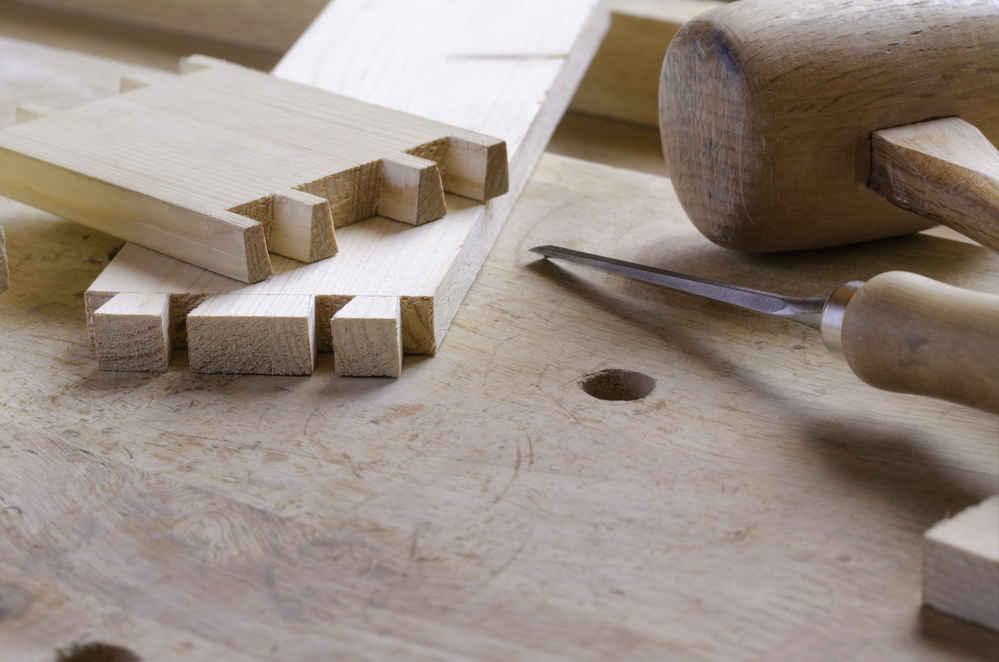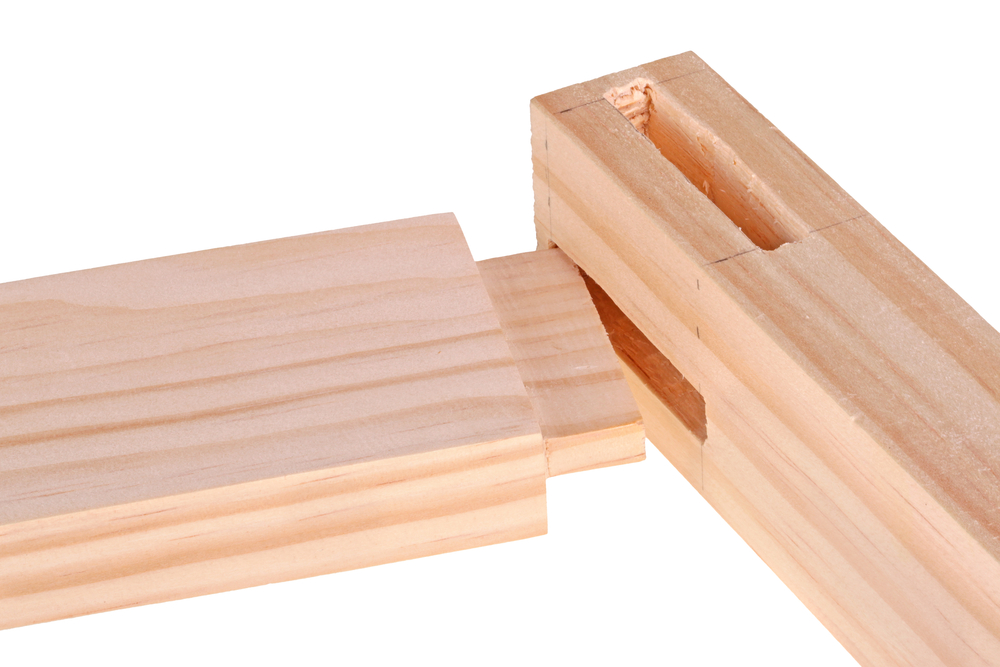When it comes to woodworking, there are a few joints that stand out as being more reliable and sturdy than the rest. In this blog post, we will compare the Dovetail joint to the Mortise and Tenon joint. Both of these joints have been used for centuries by woodworkers, and both offer their own unique benefits. Let’s take a closer look at each one! The dovetail joint and mortise and tenon are both joints that attach materials. Choosing between the two may look impossible since they perform almost similar duties and have similar features. However, by paying attention to the design, strengths, and weaknesses of each joint, you will have one that matches your interests. For more information, read the article below.
Dovetail joint
Dovetails are a beautiful joinery feature that makes beautiful accents to drawers, cabinets, and accent lines in other projects, such as handmade boxes or furniture pieces. It is a strong joint that is resistant to pulling apart. After it has glued, some pins and tails take on permanent hold. There is no need for nails. It withstands a lot of force.
The joint has a variety of designs and sizes available. These joints range from large drawers to small boxes. Dovetails can meet specific needs when it comes to size and spacing. Custom-made dovetail joints have varying angles and depths depending on the project. They use several materials, including hardwoods, softwoods, plywood, and metals. It requires special tools to cut the dovetail joint, which can be expensive.

Dovetail joints join two pieces of wood together at a right angle, creating corner joints, box joints, and other types of joints. There are two types of dovetail joints: through dovetails and half-blind dovetails. A through dovetail, also known as a plain dovetail, is where the end grain of both boards is visible when the joint is assembled.
Through dovetails are found in carcass and box construction. When in drawer construction, a through dovetail joint is an English dovetail. Woodworkers use a half-blind dovetail when they do not want the end grain visible from the front of the joint. The tails fit into mortises at the ends of the board. That is the front of the item, hiding its ends.
Half-blind dovetails fasten drawer fronts to drawer sides, making them an alternative to attaching false fronts to drawers constructed using dovetails. Dovetail joints can be loose or tight-fitting, whereas tight-fitting dovetail joints are more difficult to construct but stronger than loose-fitting joints. Loose-fitting joints are easier to construct but are not as strong as tight-fitting joints.
Pros
- Strong
- Attractive
- Solid
- Reliable
- There are different types of dovetail
Cons
- They can be difficult to mark out and cut
Mortise and tenon
A mortise and tenon are a joint that connects two pieces of wood or other material. It joins pieces of wood, especially when the adjoining pieces connect at right angles. Mortise and tenon joints are strong and stable joints used in many projects. They furnish strong furniture and connect by gluing or locking it into place.
The mortise and tenon joint does not just join materials but also gives an attractive look. However, it is difficult because of the precise measuring and tight cutting required. A mortise and tenon joint is both simple and strong. There are many variations of this joint, but the standard mortise and tenon have the mortise hole and the tenon tongue.
The tenon fits into a square, or rectangular hole cut into the other. It is cut to fit the mortise hole and features shoulders that seat when the joint enters the mortise hole. The joint may be glued, pinned, or wedged to lock it in place.

The size of the mortise and tenon is related to the thickness of the timbers. Proportion the tenon as one-third the thickness of the rail. Always cut the mortise first and then size the tenon to fit. It is quicker and easier to adjust the dimensions of a tenon.
It is hardly affected by the expansion or contraction of wooden members due to temperature and humidity changes. When shaped, mortise and tenon joints can be decorative elements in the finished appearance of a piece. Proper layout is as important as cutting and shaping.
Pros
- Strong
- Durable
- Save time
- Easy to make
- Neat
Cons
- Difficult joint for starters
Features
Dovetail joint
Pins and tails
There are two parts to a dovetail joint, pins, and tails. The tails look like the tail of a dove. the pins are on the opposite board and fit in between the tails to create a joint. The joint is strong enough not to be pulled apart in at least one direction. Add glue, and clamp the joint together well, so it will not pull apart in the other direction.
Gluing area
The dovetail joint has the strongest of all joints, a large gluing area, interlocking, resists being pulled apart, looks attractive, and holds together even without glue. a large area for glue coverage with the mechanical quality of the joinery provides a durable and long-lasting joint.
End grain
In the joint, the end grain of both boards is visible when the joint is assembled. That is when you are making a thorough dovetail, unlike when making a half-blind dovetail joint.
Mortise and tenon
Tenon tongue
The tenon also referred to as a rail, fits into a square or rectangular hole cut into the other. The tenon is cut to fit the mortise hole. It has shoulders that seat when the joint enters the mortise hole. The joint may be glued, pinned, or wedged to lock it in place.
Mortise hole
It is a slot into which some other part fits or passes https://www.merriam-webster.com/dictionary/mortise#:~:text=%3A%20a%20hole%2C%20groove%2C%20or,mortise. Whilst the tenon is the tongue or the extension which fits into the mortise to create the joint, the mortise is the hole or mouth.
End grain
Its strength depends on a 45-degree end-grain-to-end-grain glue joint, which is much weaker than gluing side grain to side grain. It is difficult to make eight 45-degree cuts while also making two pairs of sides that are the same length.
Similar Features
- Both joints have a design with longer, wider, and thicker tails.
- Both joints are strong and stable.
- They give an attractive look.
Key Differences
- Dovetail joints are stronger than those of mortise-tenon.
- Mortise and tenon are for joining rails and legs or where the two pieces are too thin to do a dovetail.
The verdict
Dovetail joints are stronger than mortise and tenon joints, making them a more desirable option for projects that require extra strength. However, mortise and tenon joints are easier to make and have a neater appearance. Both joints provide an attractive look when finished. For rails and legs or thinner pieces, you might have to go for the mortise and tenon joint. If your furniture requires strength, the dovetail joint might be your pick. I believe you have already made up your mind.
- Grain and Sheen: Teak Oil versus Danish Oil Uncovered - January 10, 2024
- The Cherry on Top: Crafting the Perfect Cutting Board - January 9, 2024
- Polyurethane Water-Based vs Oil-Based: Choosing the Right Finish - January 8, 2024